For the 7 nites, we have been doing the same things--- patrolling along the beach, watching sea turtles, waiting, writing records, making labels and tags, etc....
The process of laying eggs is similar for every sea turtles. First, a mother sea turtle will land on the beach, crawling very slowly, looking for a suitable spot to make a pit. Many times they may make a number of pits without laying eggs inside it. Reason may be there is hard rock or coral found during making a pit, which means the spot is not suitable for nesting. Once, a good pit was made, the mother with its strong hind flippers will dig a smaller and deeper round nesting pit which was the place eggs were to be laid.
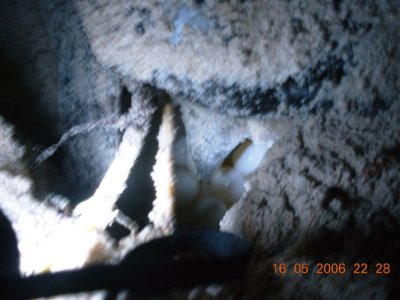
This was one of the sea turtles laying eggs. The eggs was dropped out from an opening below its tail.
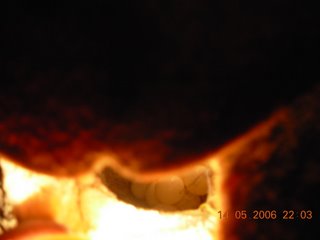
The eggs.
Usually, a mother can lay about 80-120 eggs per nest. During laying season, they will land on the beach several times to lay eggs every 10-12 days.
A coral stone tied with a long string labelled with the mother's ID numbers will be put into the nest during half way of the laying process. A wooden stick with red paint facing the direction of nest will be poked deeply into the sand beside the nest and the string with label will be tied tightly on the stick. It made our job the next morning easier in locating the nest again.
After finish laying eggs, the mother would cover the eggs with sand. Immediately after she finished laying eggs, we quickly looked for tags on both of her front flippers and noted down their identity numbers. If there was no tags found on either or both flippers, tagging will be done. Throughout the whole trip, I only managed to pierce a tag onto a sea turtle, which was considered lucky enough, me satisfied already, keke.... a number that i've chosen -- 1444. Hmm, my lucky number 1313 has been used by Terry.... T.T Next time if anyone see a turtle with ID 1444, that's mine, ok?! Beside, body measurement was also done in a short time.
Only a few minutes after finished laying eggs, the whole nest will be covered with sand. And the mother began to bath itself with sand. This always took about 1- 1.5 hrs. No one would stand near the mother this time as its flippers were so strong that sand would be splashed to a very far distance (can be up to 3m). So, this was the time I can take some nap....
The times of the beginning of every steps in laying eggs will be recorded, including the time when the mother started to leave the beach, the time the mother went back into the sea....... and say byebye to the mother.
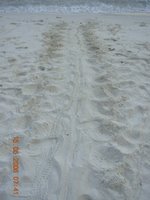
The track of the mother going back into the sea....
Although we did almost the same things every nites. Still, I would never forget how the feeling was like everytime I saw turtles coming up the beach. How happy I was to see the mothers coming, and how disappointed each the mother left; how respect I was to every mother. Every times, I would place my palm on their flipper prints on sand, as if I could feel the warm of the mother's love, as if I could feel the determination of a mother to give lifes to new generation. The prints were so firm, imagine how much energy a mother needs for the whole process of laying eggs to be done....
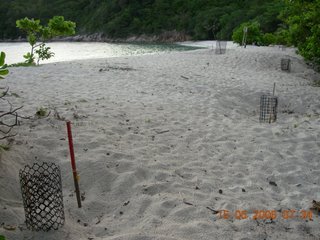
Our beach. Those nets were where the nests placed, to protect them from predators like lizards and ghost crabs.
Every next mornings, we will dig up sand to uncover the nest again.
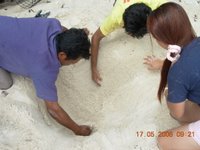
Digging up sand using bare hands.
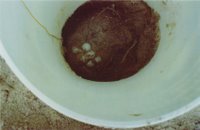
The revealed nest with a few eggs seen.
Next, we will make a net surrounding the diameter of the nest and put it deep into the nest to protect it.
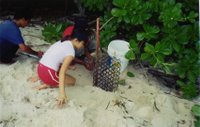
After putting up net, covering the nest with sand again.
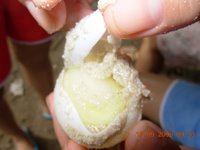
A broken turtle egg.
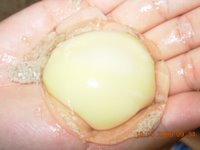

Take note! The egg white here was very densed, and the egg yolk was firm.

The newly hatchled baby turtles. Waiting to be released into the sea only after their umbilicus dropped.
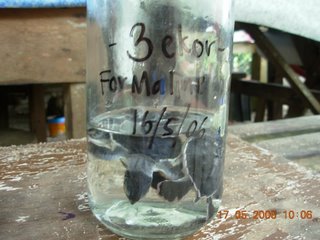
However, 3 died the next 2 days.....
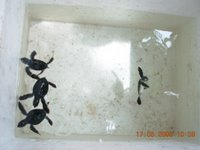
he survived 4 having some swimming practices.
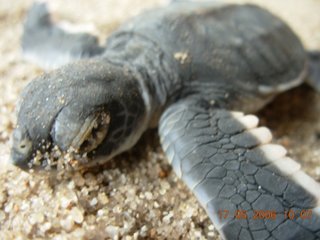
In the end, only 2 survived and were released into the sea. Sob sob.... doubt they will survive also, so lonely, so helpless, so many obstacles ahead. Be strong ya....
The surviving rate of sea turtles in unknown. With the ongoing development of their surrounding environment, the presence of pollutions and nature predators, and lost of food sources, many died before they could even reach mature which took 20 yrs. So many of them died hit by boat propellers, choked dead by plastic bags as they mistook them as their food -- jellyfish. The sea turtles may lay numerous eggs every nest , but how many of those survive? Especially impossible when you can see the turtle eggs sold in wet market! You can't do anything, as it's not an illegal act selling turtle eggs.
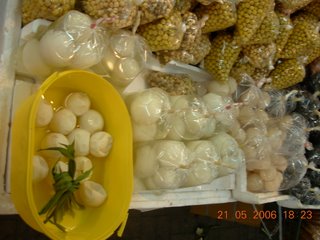

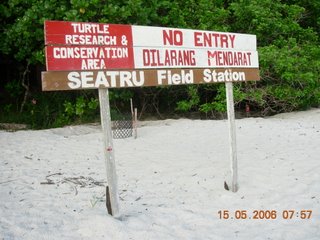
No comments:
Post a Comment